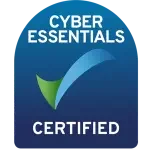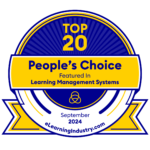
This post explores how easy it is to simplify your LMS Reporting with our cloud-based training software. Do you find it becoming increasingly difficult to keep track of your employee’s training histories and what courses they have and haven’t taken? Our data visualization and reporting tools can help you monitor progress and make informed decisions to improve course content and learner engagement.
Assessing skill sets, closing knowledge gaps, and reporting on this data through reports are all critical to trainers and their administrative staff. It certainly doesn’t help that we are all distanced and have to rely on an email here or there, with details on attendance and blended learning courses that have been completed.
IN THIS ARTICLE...
What is Learning Analytics?
Learning analytics is the process of collecting, analyzing, and reporting data about learners and their learning experiences. By leveraging data analytics, educators and administrators can gain valuable insights into how learners interact with course materials, identify areas where they may be struggling, and develop targeted interventions to enhance learning outcomes.
This data-driven approach can be applied to various aspects of the learning process, including course design, instructional strategies, and learner assessment. Ultimately, learning analytics helps create a more personalized and effective learning experience for each individual.
Analytics in Learning Management Systems
Learning Management Systems (LMS) offer several types of analytics that can help educators and administrators make data-driven decisions:
- Descriptive Analytics: Provides a basic overview of what occurred, such as course completion rates and learner engagement metrics. This helps in understanding the general trends and patterns in the learning data.
- Diagnostic Analytics: Helps identify the root causes of issues within the learning program, such as why learners are struggling with a particular concept. This type of analysis is crucial for pinpointing specific areas that need improvement.
- Predictive Analytics: Uses algorithms and statistical models to forecast future outcomes, such as predicting which learners are at risk of not completing a course. This allows for proactive interventions to support at-risk learners.
- Prescriptive Analytics: Provides recommendations for enhancing learner outcomes, such as suggesting additional resources or support for learners who are struggling. This helps in making informed decisions to improve the overall learning experience.
What LMS Analytics Data can you Report?
Intellek’s Learning Management System has a very unique analytics component along with a host of LMS reporting tools. Our analytics dashboard provides a quick way to see the login activity for up to a year, with longer-term time periods being added in the near future. In addition, the Analytics Dashboard provides usage stats, top courses by completion, and the hours spent by each trainer delivering training.


Key Metrics to Track in LMS Reporting
Effective LMS reporting involves tracking several key metrics to gain a comprehensive understanding of the learning process:
- Learner Engagement Metrics: These include time spent on course materials, pages viewed, and interactions with multimedia content. High engagement levels often correlate with better learning outcomes.
- Learner Progress Metrics: These metrics track course completion rates, assessment scores, and progress towards learning objectives. Monitoring learner progress helps in identifying who is on track and who may need additional support.
- Learner Feedback Metrics: Collecting survey responses, ratings, and comments provides insights into the learner’s experience and satisfaction with the training programs. This feedback is essential for continuous improvement.
- Learning Outcomes Metrics: These include knowledge retention rates, skill mastery rates, and the application of learning on the job. Tracking these outcomes helps in evaluating the effectiveness of the training programs.
Running Intellek LMS Reports
When you run our LMS reports they include an array of content, not limited to:
- Training Tracking – All online courses include statuses, scores, duration, and time stamps. It gives the ability to select multiple search criteria and groups by course or user.
- Course Assignments – Reports on complete and incomplete assigned courses and offers the ability to group by course or user.
- Courses Not Taken – Thoroughly allows for a more in-depth inspection of those who haven’t yet completed training, particularly important for topics such as Security Awareness.
- Path Progress – This report provides detail on the user’s incomplete and complete learning paths.
- Survey Summary – A report can be produced to view the results of surveys that users have taken including any questions and responses provided.
How to Run LMS Reports
All the report data can be exported, saved, and scheduled including additional columns of data in relation to the user or specific course.
Do you need recurring reports frequently each week or month? No problem! They can be set for any date or time, as needed with the ability to have them emailed directly to your inbox.
Scheduling your LMS Reporting
Scheduled LMS reporting seems to be a common need for many of the Learning & Development teams that we work with. Is this a common need for your organization as well? Our LMS has report scheduling tools that really help.
The results of a poll on LinkedIn showed that in 2022 training could likely be a mix of Instructor-Led Training and Blended Learning. Tracking these means of training through scheduled reporting could make things very simple for your team.
Having the option to schedule reporting delivered on a recurring basis can assist with overall business needs. Our feature sets up recurring reports and allows complete flexibility and convenience by getting reporting details sent directly to your Inbox.
Best Practices for LMS Reporting and Analytics
To maximize the benefits of LMS reporting and analytics, it’s essential to follow these best practices:
- Define Clear Learning Objectives and Outcomes: Ensure that data collection and analysis are focused on meaningful metrics that align with your learning goals.
- Use a Data-Driven Approach: Inform instructional design, learner support, and program evaluation with data-driven decisions. This approach helps in creating more effective and personalized learning experiences.
- Provide Actionable Insights: Share valuable insights with stakeholders, including learners, instructors, and administrators. This helps in making informed decisions that enhance the learning process.
- Use Visualization Techniques: Present complex data in a clear and concise manner using charts, graphs, and dashboards. This makes it easier to understand and act upon the data.
- Continuously Evaluate and Refine: Regularly assess the LMS reporting and analytics process to ensure it meets the needs of all stakeholders. Continuous improvement is key to staying effective and relevant.
By following these best practices, you can ensure that your LMS reporting and analytics provide the actionable insights needed to drive continuous improvement in your training programs.
Learning Management System Reports for Data Driven Decisions
If you are an LMS administrator or an L&D manager tasked with reporting on your organization’s LMS progress and information, it can be a daunting task to figure out where to start. The main thing to remember is that there is no right way to do these reports – there is no wrong answer when it comes to what reports work for you and your team.
If reports are overwhelming or confusing for your staff, then streamline the process as much as possible so that your LMS reporting becomes a formality that can be easily accomplished in minutes every month.
Feel free to reach out to us for more details, a free demo, or more advice on how to run learning management system reports.
Intellek (formerly TutorPro) is a founding member of the learning technology industry. With a presence in the USA, UK, Canada, and the EU – for over 30 years we have pioneered the development of cutting-edge eLearning software and online training solutions, with a large and diverse portfolio of international clientele.
Disclaimer: We use all the tools available including generative AI to create relevant and engaging content.





